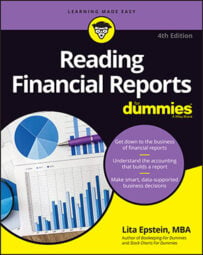Financial report readers should know about reinvestment options. One way a company can build better relations with its investors is to offer them stock directly so they can avoid broker costs on every share they buy. Some companies offer their investors dividend reinvestment plans and direct stock purchase plans. Both plans provide companies effective ways to maintain direct contact with their shareholders instead of going through a broker.
Dividend reinvestment plans
Dividend reinvestment plans give current investors a way to automatically reinvest any dividends toward the purchase of new shares of stock. To take advantage of this plan, shareholders must register their stock directly with the company instead of opening an account with a broker.
Shareholders can reinvest all or just part of their dividends through the reinvestment plans. Many times, these plans offer investors the opportunity to buy additional shares by using cash, check, or a debit that's automatically taken from the investor's bank account. This option gives small investors a way to steadily increase their ownership in the company.
Many firms also allow investors to access their dividend reinvestment plan on the company website, making maintaining accounts and managing transactions even easier.
Direct stock purchase plans
Through direct stock purchase plans, companies can offer stock directly to the public so that investors don't have to contact a broker to purchase even the first share of stock. Prior to these programs, investors had to buy stock through a broker before they could participate in a dividend reinvestment plan.
Today shareholders can buy all their stock directly from a company, if it offers the service, and avoid paying any broker fees. Direct stock purchase plans also provide the same features as dividend reinvestment plans, such as the ability to reinvest dividends.
Depending on how a company sets up its program, the shareholder or the company may pay the direct stock purchase plan's fees. Some companies offer this service for free; others charge a fee for every transaction, which can amount to more than what a broker charges.
Be sure you understand the fees involved if you buy directly from a company, and compare those fees with the cost of buying through your broker to make sure you're getting a good deal.

